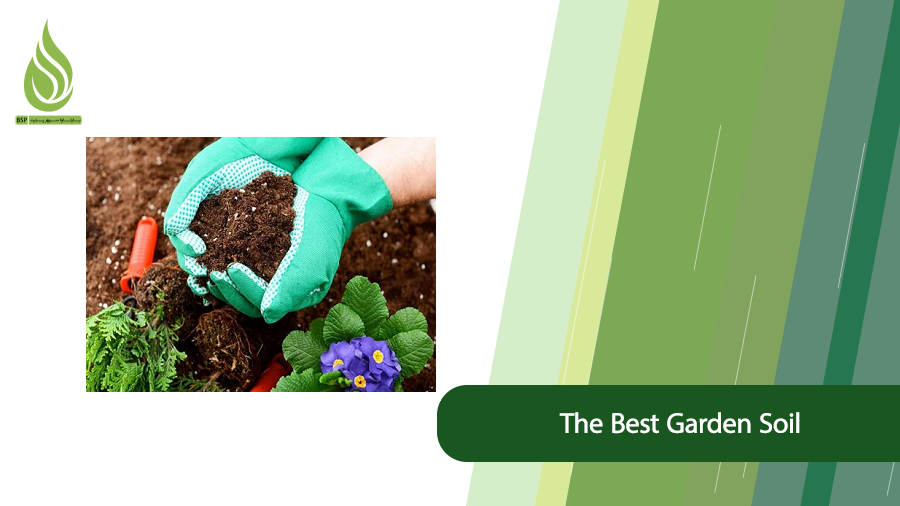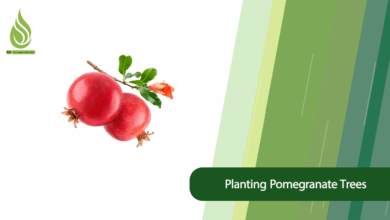
What Are the Characteristics of the Best Garden Soil?
Garden soil is used to cultivate outdoor plants, including trees, vegetables, and flowers. The best garden soil is fertile, retains adequate moisture, and has the ideal composition to support plant growth. If the soil lacks essential nutrients or proper structure, amendments may be required to improve its quality.
In this article, we’ll explore the ideal composition of garden soil and share tips for preparing it effectively.
Why Does Garden Soil Matter?
High-quality soil is the most critical factor for healthy plant growth in a garden. Good soil enhances plant performance, directly improving the quantity and quality of your harvest. Ideal garden soil should meet the following criteria:
- Nutrient-rich: Provides essential nutrients like nitrogen, phosphorus, and potassium for plant development.
- Proper aeration: Allows oxygen to reach plant roots, promoting healthy growth.
- Moisture retention: Holds water effectively while preventing rapid evaporation.
- Balanced pH: A pH level between 6 and 7 optimizes nutrient absorption.
- Disease prevention: Contains beneficial microorganisms to protect plants from harmful pathogens.
By selecting or improving soil to meet these standards, you’ll create an environment that boosts plant health, maximizes yields, and ensures a thriving garden.

What Are the Characteristics of the Best Garden Soil?
The ideal garden soil should possess the following qualities:
- Proper composition: Ideal soil is a balanced blend of three components: sand, clay, and silt. We’ll dive deeper into this below.
- Balanced pH: Acidic or alkaline soils can disrupt nutrient absorption. For a thriving garden, maintain a pH between 6 and 7.
- Water retention: The soil should hold moisture effectively without becoming waterlogged.
- Good drainage: Soil must drain well to prevent water pooling around roots, which can lead to root rot and other plant health issues.
- Porous structure: Ideal soil has a porous texture to allow air circulation to roots, delivering oxygen essential for growth and preventing root decay.
- Organic matter: Soil rich in organic materials (like compost or manure) supports microbial activity and improves structure.
- Microbial health: Ideal garden soil should be free of pests and diseases while hosting beneficial microorganisms that enhance plant health.
In summary, ideal garden soil combines physical, chemical, and biological properties to foster healthy, robust plant growth.
What Is the Best Composition for Garden Soil?
Garden soil can be sandy, clay-based, or loamy:
- Sandy soil has coarse particles, drains well, but struggles to retain water.
- Clay soil has fine particles that hold water but drains poorly, risking root rot.
While sandy and clay soils have individual strengths, neither is ideal on its own. Loamy soil—a mix of sand, clay, and organic matter—is the gold standard. It creates the perfect foundation for planting flowers, vegetables, and trees.
Organic amendments like compost, leaf mold, manure, or peat moss improve soil structure, boost water and nutrient retention, and promote beneficial microbial activity.
The Role of Each Component in Loamy Soil
- Sand: Enhances permeability and drainage, preventing water buildup around roots while improving soil aeration.
- Clay: Retains moisture and nutrients, but excessive clay content can hinder drainage.
- Organic matter: Compost, manure, and similar materials enrich microbial activity, improve soil structure, and increase water/nutrient-holding capacity. They also enhance soil aeration, enabling plants to access nutrients more efficiently and grow healthier.
By balancing these elements, loamy soil creates an optimal environment for plants to thrive.

Improving Your Garden Soil
If your garden soil isn’t in great shape, the first step is to amend its texture, followed by enhancing its overall condition. This includes adjusting the soil’s pH and replenishing essential nutrients.
Adding Organic Fertilizer
If your soil lacks organic content, simply mix in compost, leaf mold, or well-rotted manure. Spread a 2-3 inch (5-8 cm) layer over the soil surface—this will gradually enrich the soil as it breaks down.
Soil Testing: The Key to Healthy Soil
The best way to determine your soil’s needs is through soil testing. A proper test will:
- Measure nutrient levels (nitrogen, phosphorus, potassium, etc.)
- Identify pH imbalances
- Help you decide whether to add lime (to raise pH) or sulfur (to lower pH)
Essential Tips for Maintaining Healthy Garden Soil
Keeping your soil fertile requires consistent care. Follow these best practices to ensure long-term soil health and robust plant growth.
Ideal Soil pH for Gardens
Soil pH is a critical factor in plant health, affecting nutrient availability. Most plants thrive in a slightly acidic to neutral pH range (6.0-7.0).
- In this range, key nutrients (nitrogen, phosphorus, potassium) are easily absorbed.
- If pH is too low (acidic), phosphorus and calcium become less available.
- If pH is too high (alkaline), iron and manganese may be locked in the soil.
- To raise pH (reduce acidity): Apply lime.
- To lower pH (increase acidity): Use sulfur.
Testing Your Garden Soil
Regular soil testing helps you optimize fertility and structure. Key tests include:
- pH test – Measures acidity/alkalinity.
- Nutrient test – Checks levels of nitrogen (N), phosphorus (P), and potassium (K).
- Drainage & aeration test – Evaluates soil structure and compaction.
- Texture test – Determines sand, silt, and clay ratios.
- Organic matter test – Assesses microbial activity and soil richness.
By testing and amending your soil properly, you’ll create the perfect foundation for a lush, productive garden.

Essential Nutrients for the Best Garden Soil
For plants to thrive, garden soil must contain the right balance of essential nutrients, which fall into two categories:
- Macronutrients: Primary nutrients like nitrogen (N), phosphorus (P), and potassium (K) are needed in large quantities.
- Micronutrients: Trace elements such as calcium, magnesium, iron, zinc, and manganese are critical for supporting growth, flowering, and fruit production.
Regular soil testing and targeted fertilization are key to maintaining this balance. After testing:
- Adjust nutrient levels using fertilizers like ammonium sulfate (applied early in the growing season to boost spring growth).
- Apply potassium-rich fertilizers during fruiting stages to improve fruit size and quality.
Watering Your Garden Effectively
Proper irrigation is vital for plant health and soil quality. Follow these guidelines:
- Timing: Water in the early morning or evening to minimize evaporation and maximize absorption.
- Depth: Opt for deep watering (soaking the root zone) over light surface watering. This encourages roots to grow deeper and strengthens plants.
- Soil Check: Always test soil moisture before watering. If the top 1-2 inches feel moist, skip watering.
- Drainage: Ensure soil has good drainage to prevent waterlogging, which can suffocate roots and promote disease.
By tailoring watering practices to your plants’ needs and soil conditions, you’ll create a healthier, more resilient garden.
